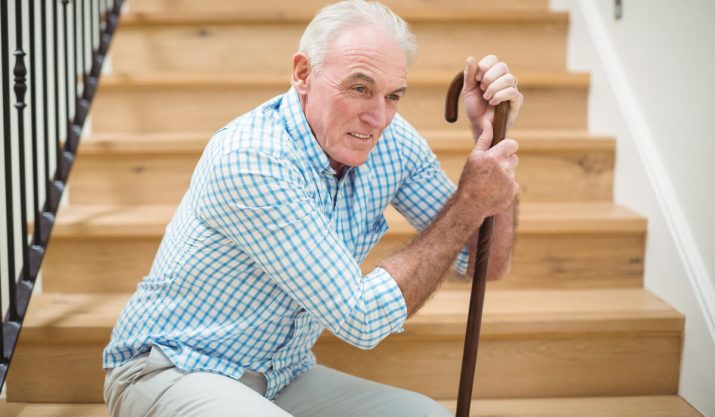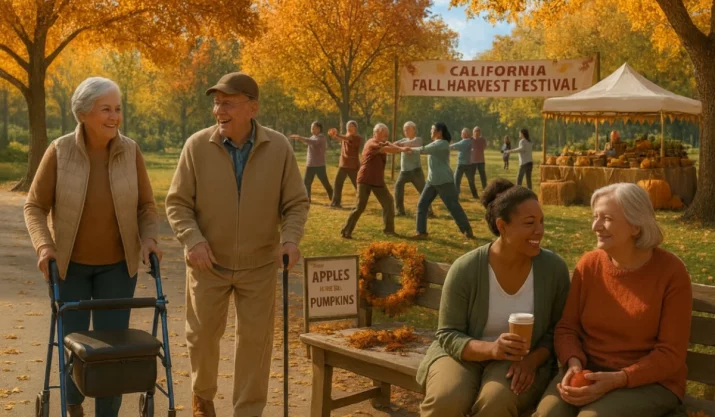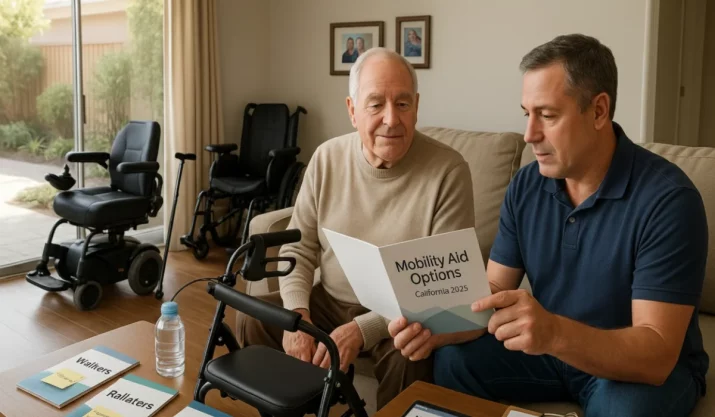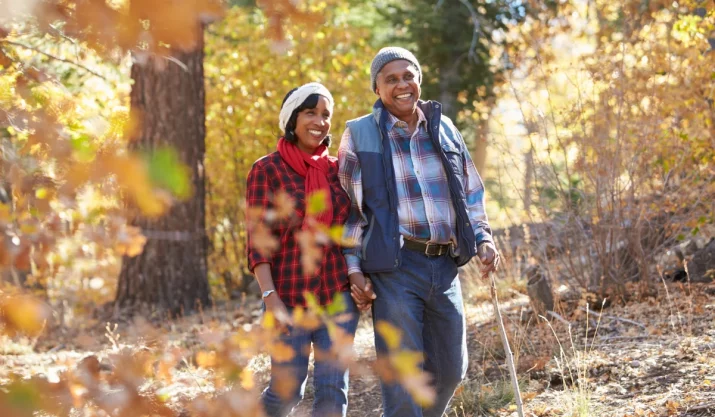Senior Fall Statistics: Risks to Know About and How to Prevent Them

Table of Contents
Every year, one out of four people aged 65 and older fall, and 25% of those falls cause serious injuries. If you or a loved one is over 65, you may be concerned about everyday risks that once seemed trivial.
It’s true that common health issues associated with aging can make everyday life more difficult and dangerous for seniors. But there are steps you can take to prevent a fall for your loved one.
Key Takeaways
- Falls are particularly risky for adults over 65 because of health problems associated with aging.
- Common fall-related injuries include head injuries and fractured or broken bones.
- There are steps you can take to prevent a future fall, such as regular eye exams, an exercise regimen, and home modifications for accessibility.
Why Do Falls Pose Such a Big Risk to Seniors?
What Risks Do Falls Pose to Seniors
01
Traumatic Brain Injury
02
Infection Risk
03
Surgery Risk and Recovery Complications
04
Hip and Other Bone Fractures
Losing your balance poses a risk to any person regardless of age but is particularly dangerous for people aged 65 and over. There are a number of factors that contribute to this, including vision problems and medication side effects that affect balance.
Seniors who don’t spend as much time outside as they used to may be deficient in vitamin D, another contributor to poor balance. Moreover, older people who aren’t able to stay as active as they once could may experience lower body weakness or have trouble walking properly.
Moreover, seniors are at higher risk for common health problems linked to aging (i.e. increased blood pressure, heart disease, Alzheimer’s), many of which may complicate recovery or make hospitalization more risky.
How Deadly Are Falls for Seniors?
Falls are the leading cause of injury death for people over 65. Often, it’s not the impact of the fall itself that’s fatal but rather the repercussions of any injuries resulting from the fall.
Falling and hitting your head can cause a traumatic brain injury, which may be deadly or cause dangerous lasting symptoms. A moderate traumatic brain injury may lead to persistent headaches, loss of coordination (enabling future falls), or even future seizures. Even a mild TBI can leave behind unpleasant effects like trouble with speech, dizziness, blurred vision, and ringing in the ears.
Additionally, falls can often lead to broken bones. Osteoporosis is common in older people, meaning their bones may break more easily. Recovery from any broken bone can be more difficult for seniors, and can create an increased death risk for up to 10 years after the incident. Fractures are similarly risky, and 95% of hip fractures are caused by falling.
Another factor that makes falls deadly for seniors is surgery risk. Some injuries caused by falls may require surgery, and common health problems associated with aging make surgery or anesthesia complications more prevalent. Increased blood pressure, clogged arteries, and heart and lung disease are examples of such conditions that might complicate recovery. Moreover, seniors are more vulnerable to anesthesia, and may experience confusion, delirium, or memory loss upon waking up.
Finally, infection risk is an important consideration in why falls might be fatal for seniors. If a fall creates a cut, scrape, or other wound, there’s a possibility that the affected site may become infected. Infections can be fatal and may necessitate hospitalization. Not to mention, sickness on top of injury can be debilitating for anyone, especially seniors with pre-existing conditions.
What Are the Most Common Injuries Caused by Falls?
Depending on the nature of the incident, falls can cause a variety of both minor and serious injuries. However, there are certain injuries that are particularly common consequences of falls in older adults.
Head Injuries
One unfortunately common result of falls in seniors is head injuries. All head injuries are dangerous, especially for older people, but head injuries that affect the brain are particularly serious. One in five patients will experience seizures following a head injury.
Not to mention, many older people take blood thinners, which can increase bleeding (both internally and externally) if the person is injured. Internal bleeding from a head injury is incredibly dangerous. If you or an older person you love falls and hits their head, it’s important to see a doctor immediately.
Hip Fractures
Hip fractures are especially difficult to recover from and are a common result of falling, especially falling sideways. 300,000 older people are hospitalized with hip fractures annually, and senior women and people with osteoporosis are at particular risk. Other common fracture areas include the ribs, hands, feet, and ankles.
Broken Wrists, Ankles, and Arms
For seniors, one in five falls will result in an injury such as a broken bone. Osteoporosis affects many older people, making bones gradually thinner and weaker. As many as 43.9% of American adults over 50 have low bone mass. In many cases, such a condition can go undetected until an injury occurs.
Other Common Injuries
Other common injuries resulting from seniors falling include sprains as well as lower back and groin injuries resulting from the overextension of muscles. Between 30-50% of fall injuries involve minor tissue damage, which doesn’t require intensive medical care.
Where Are the Majority of Falls Happening?
36% of falls occur on the same level
5.5% of fall occur on the stairs and steps
Older adults can experience falls anywhere, but it’s best to be prepared if you or a loved one will be visiting a particularly risky place. According to CDC data, 38.6% of senior falls occur on level ground, but a significant 5.5% of all senior falls occur on stairs or steps. Other common causes of falls include chairs, wheelchairs, and ladders.
It’s important to be aware of fall risk factors inside your senior loved one’s home and other places they visit often. Make sure sturdy furniture is readily available and that stairs can be avoided where possible. Seniors are more likely than younger people to trip or stumble, so make sure floors are clear and not slippery.
Outdoor risk factors are crucial to consider as well. Be aware of any potential weather-related risks like rain, ice, or snow. Bodies of water, trees, and scaffolding are also common risk factors. Even playground equipment can pose a threat to older people, depending on their level of fitness and ability to balance. Adjustments may need to be made to make outdoor activities (i.e playground visits with grandchildren, swimming, jogging) more safe and accessible.
Falls Are Increasing, What Can You Do to Prevent One?
What Risks Do Falls Pose To Senior
01
Maintain a regular exercise regimen
02
Attend regular eye exams
03
Make home modifications for aging in place
04
Discuss vitamin D supplements withyour physician
A recent University of Michigan study shows that the number of senior falls is increasing by 1.5% annually, despite increased efforts to prevent such accidents. It’s unclear exactly why this trend is occurring, but one possibility is that the number of falls correlates to an increasing number of seniors who remain active.
Despite this statistical paradox, regular exercise for older adults is healthy and crucial for preventing injury. A regular exercise regimen offers a variety of health benefits, like prevention of chronic disease, improved mood, and a boost for the immune system.
It’s healthy for seniors to keep up a workout routine, regardless of their current fitness level. Performing strength and mobility exercises regularly will decrease your senior loved one’s risk of falling and speed up recovery in the event they do. Even a simple routine of chair exercises can provide a life-saving boost in fitness and flexibility.
Another of the most important steps you can take to keep your senior loved one safe is ensuring that they attend regular eye exams. Poor vision is one of the leading causes of senior falls, so it’s important to ensure that your senior parent or loved one’s eye care needs are met. Keep tabs on doctor’s appointments and remind the seniors in your life to wear any prescribed glasses or contacts.
Make any necessary modifications to your home (or your loved one’s home) in order to decrease fall risks. For instance, if your senior loved one has trouble getting up and down stairs, consider installing a chair lift. Bathroom modifications (like grab bars) may be necessary to prevent a fall, especially when the floor is slippery. Ensure all furniture is as sturdy and accessible as possible (i.e., swap out a tall bed frame for one at hip level, purchase dining room chairs with arm rests).
Since vitamin D deficiency can cause weakness that leads to increased fall risk, vitamin D supplements are a good idea. Moreover, a generally healthy diet and sleep schedule are important for seniors to stay fit and alert.
How Can I Be Prepared for a Fall?
If you’re worried about a senior loved one’s risk of falling, the best thing you can do is be prepared. Make a plan in the event of a fall. List emergency contacts somewhere that’s easily accessible to your loved one, and have friends or neighbors nearby on standby. Knowing the course of action to take, whether or not you’re with your loved one in the event of a fall, will give you peace of mind. This way, the seniors in your life will be guaranteed the help they need as fast as possible.
You might also consider investing in a medical alert system with fall detection, like LifeAlert. With the touch of a button, such devices will connect your loved one to a dispatcher who can send paramedics to help them immediately. This is also useful for quick access to emergency services in other situations, such as home invasion. There are a variety of affordable and easy-to-use medical alert systems on the market. Some, like UnaliWear, will detect if your loved one has fallen with a motion sensor and automatically dispatch emergency services to their location, even if they’re rendered unable to speak or press the button.






